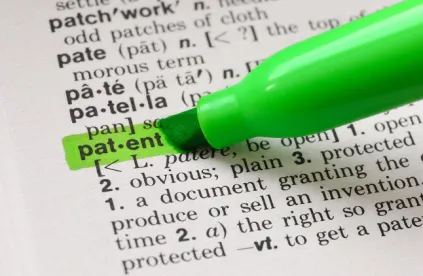The US Court of Appeals for the Federal Circuit affirmed a Patent Trial & Appeal Board (Board) obviousness decision, finding that the Board did not err in restricting the broadest reasonable interpretation of a claim term based on its use in the specification. Quanergy Systems, Inc. v. Velodyne Lidar USA, Inc., Case Nos. 20-2070; -2072 (Fed. Cir. Feb. 4, 2022) (Newman, Lourie, O’Malley, JJ.)
Velodyne owns a patent directed to a lidar-based 3D point cloud measuring system that can be used in self-driving vehicles to sense their surroundings. Quanergy petitioned for inter partes review of Velodyne’s patent, challenging the claims as obvious over a Japanese patent application (Mizuno). During the proceedings, the Board construed the broadest reasonable interpretation of the term “lidar (light detection and ranging)” to mean “pulsed time-of-flight (ToF) lidar” based on the written description of Velodyne’s patent and found that Mizuno’s system was not a ToF lidar system. The Board also presumed a nexus between the claimed pulsed ToF lidar system and Velodyne’s evidence of commercial success, relying on mapping the features of the claimed ToF lidar system to Velodyne’s commercial products. Based on its obviousness analysis and presumption of nexus, the Board issued final written decisions, finding that Velodyne’s patent was not unpatentable as obvious. Quanergy appealed.
Quanergy raised two arguments on appeal: The Board erred in its construction of the term “lidar,” and the Board erred in its obviousness analysis. Addressing claim construction, Quanergy argued that the Board did not use the broadest reasonable interpretation of “lidar” since “lidar” merely requires the use of laser light for detection and ranging, and thus “lidar” includes not only “pulsed ToF lidar” but also triangulation and other detection techniques described in Mizuno. The Federal Circuit rejected Quanergy’s argument, finding that the Board did not err in construing the term “lidar” according to its broadest reasonable interpretation because the written description focuses exclusively on “pulsed ToF lidar.”
Turning to obviousness, Quanergy argued that the Board erred in concluding that Velodyne’s claims were nonobvious over Mizuno because the expert testimony that the Board relied upon focused only on one particular embodiment of Mizuno’s device, which was not directed to a pulsed ToF lidar system. The Federal Circuit rejected this argument, finding that the Board did not err because Mizuno described “detect[ing] light reflected at an angle using position or image sensors, neither of which are used in pulsed time-of-flight lidar systems.” Based on this description, the Court found that Mizuno’s device was not a ToF lidar system.
Quanergy also argued that the Board failed to consider the issue of unclaimed features before presuming nexus. Quanergy argued that Velodyne’s evidence of commercial success related to those unclaimed features, such as a 360-degree horizontal field of view, a wide vertical field of view, a dense 3D point cloud and software, all of which were critical and materially impacted the functionality of Velodyne’s products. The Federal Circuit rejected this argument, finding that the Board did not err in finding a presumption of nexus because there was “ample evidence” that each alleged unclaimed feature could be adequately and reasonably derived from the claim limitations. The Court thus affirmed the Board’s decisions that the challenged claims of Velodyne’s patent were not unpatentable as obvious.




 />i
/>i

